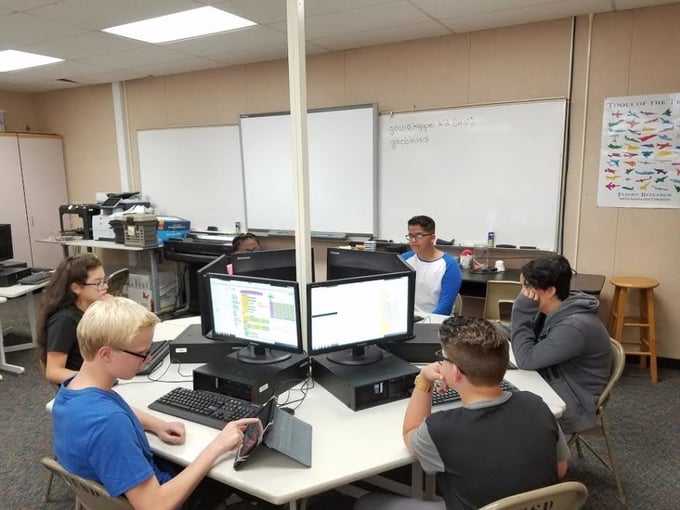John Kell is an 8th grade math and history teacher for a small rural school in the high desert region of California. He has been honored to be named Teacher of the Year by his school, as well as a Teacher of Excellence through the Mojave Environmental Education Consortium. John is also the STEM Coordinator for his school and as such, was recently excited to learn that the school is now a California Distinguished Gold Ribbon Recipient for its STEM Program and Title 1 Academic Achievement.
Introduction to Computer Science (ICS) has changed the environment of my classroom because students are truly seeing for the first time the power of coding as it applies to the real world. Students see real-world connectivity to concepts they rarely, if ever, see – let alone understand. Combine this with the hands-on application of designing and building mobile apps, coding for practical purposes, and a process that allows every student an entry point for each given activity, and you have the perfect mixture for motivating all students to develop a deep sense of curiosity and to think both critically and innovatively.
Walking into my classroom now is pretty much like walking through a professional office of coders and designers. Students, during nearly every subject, are collaborating and, more importantly, thinking in terms of a pathway that will allow them to reach whatever objective they have been assigned. There is a lot of talking in my room at times, but if you listen closely, it’s pertinent to either solving a given problem or justifying the approach toward the solution. Students are active in thought and more importantly, are beginning to understand how it is OK to fail, so long as they learn from those mistakes and continue forward with the plan.
One of the most important aspects that ICS focuses on is collaboration. From paired programming to presenting their projects and challenges, students have all agreed that sometimes working together to obtain one goal is much better than working alone. Students are also able to recognize events and event handlers that are implied by the user interface, as well as describe the protocols that enable such things as networking and data sharing.
One of the skills I like teaching most is helping students develop the ability to manage a given project from beginning to end. All students need to be able to chunk projects and develop a plan that will enable them to complete a project in its entirety. Not only that, but they also learn organizational skills and learn that creativity is sometimes the key to innovating a given code to fit the needs of a project they are working on.
Students understand that they are receiving a skill set that nobody in our area is receiving and that we are opening doors of opportunities with the experiences we are providing them with these courses. They are more than just excited; they are developing pride in what they are learning, and it shows in their work effort and work ethics. Their parents continue to thank me and my co-teacher for giving their children this opportunity they know that they can get nowhere else. They understand the future their children will be living in, and to have their children taught some of the skills they will need to be successful in that future makes them very gracious and pleased about this experience.
The greatest surprise of all, however, is how much teaching one grade level of computer science has affected the entire school. We are a K-8 school and only teach this course to 8th graders. Teachers from the other grades wanted to get in on helping to prepare their own students for the day when they are taking this class, and now our school does basic scratch coding at the lower grades.
PLTW’s blog is intended to serve as a forum for ideas and perspectives from across our network. The opinions expressed are those of each guest author.


